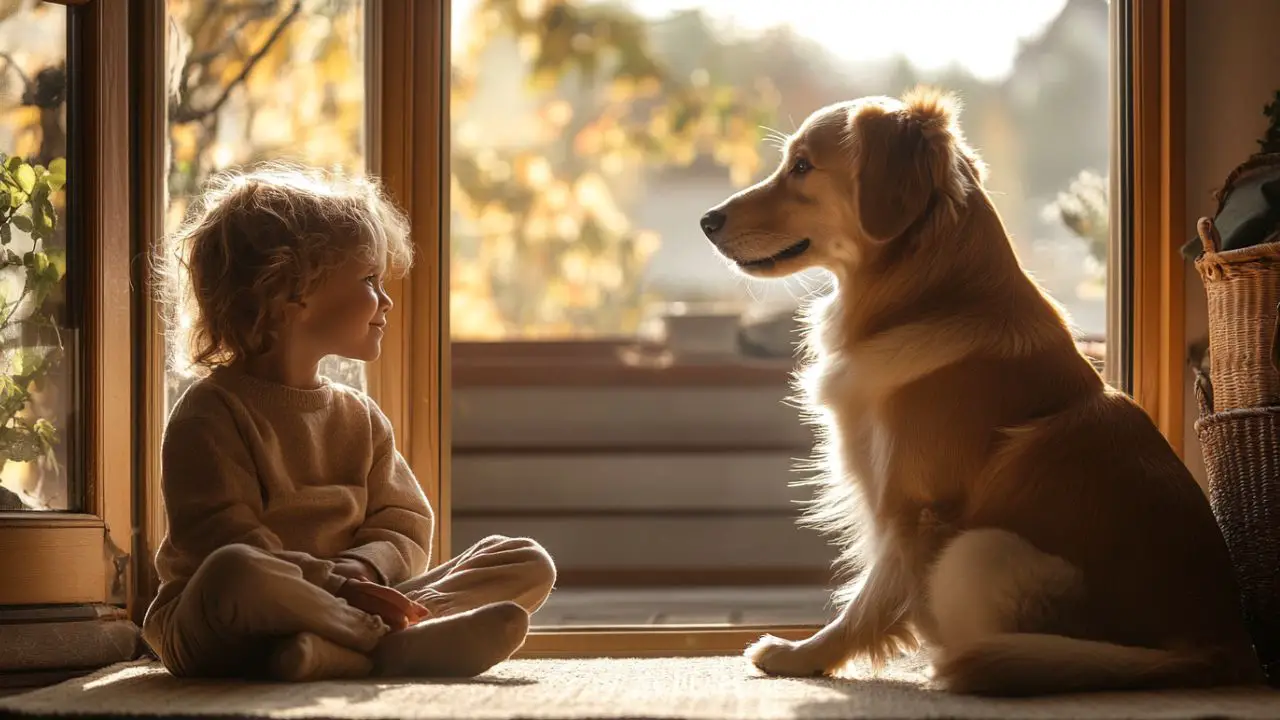Introducing dogs to children can be a rewarding experience that fosters lifelong bonds and teaches valuable life lessons.
However, it’s crucial to approach this introduction with care and supervision to ensure the safety and comfort of both the child and the dog.
This guide will provide you with essential tips and strategies to make the introduction process smooth and positive for everyone involved.
Prepare the Dog
Before introducing a dog to children, it’s important to ensure the dog is well-socialized and comfortable around people.
Begin by exposing your dog to different environments, sounds, and experiences to build their confidence.
Teach basic obedience commands such as “sit,” “stay,” and “leave it” to establish control and communication.
If your dog shows any signs of anxiety or aggression, consult with a professional dog trainer before proceeding with introductions.
Educate the Children
Preparing children for their interaction with dogs is equally important.
Teach children about dog body language and how to recognize signs of stress or discomfort in dogs.
Explain the importance of being gentle and respectful towards animals.
Instruct children to always ask permission from an adult and the dog’s owner before approaching or petting a dog.
Demonstrate proper ways to pet a dog, such as avoiding the face and tail, and petting gently on the chest or side.
Choose the Right Setting
Select a neutral, calm environment for the initial introduction.
A quiet park or a spacious backyard can be ideal locations.
Ensure the area is free from potential distractions or stressors that could affect the dog’s behavior.
Avoid crowded or noisy places that might overwhelm either the dog or the children.
Control the Introduction
Begin the introduction with the dog on a leash, held by a responsible adult.
Have the children approach slowly and calmly, one at a time.
Instruct the children to stand still and allow the dog to approach them first.
This gives the dog a sense of control and reduces the likelihood of feeling threatened.
If the dog seems comfortable, allow the child to gently pet the dog’s chest or side.
Supervise All Interactions
Never leave children and dogs unsupervised, regardless of how well the introduction goes.
Constant adult supervision is essential to prevent accidents and ensure positive interactions.
Be prepared to intervene if either the dog or the children show signs of discomfort or overexcitement.
Teach children to respect the dog’s space and not to disturb the dog while it’s eating, sleeping, or playing with toys.
Encourage Calm Behavior
Promote calm and gentle behavior from both the children and the dog.
Discourage rough play, chasing, or any activities that might excite the dog too much.
Teach children to use a quiet, friendly voice when talking to the dog.
Reward both the dog and the children for calm, respectful behavior to reinforce positive interactions.
Recognize Signs of Stress
Learn to identify signs of stress in both dogs and children during their interactions.
Dog stress signals may include yawning, lip licking, turning away, or a tucked tail.
Children might show fear or discomfort through body language or verbal cues.
If you notice any signs of stress, calmly end the interaction and give both the dog and the children a break.
Gradual Exposure
Build up the duration and frequency of interactions gradually over time.
Start with short, positive encounters and slowly increase the length as both the dog and children become more comfortable.
This gradual approach helps build trust and positive associations.
Allow the dog to retreat to a safe space when needed, and teach children to respect the dog’s need for alone time.
Teach Appropriate Play
Once the dog and children are comfortable with each other, introduce appropriate play activities.
Supervise games like fetch or hide-and-seek with toys.
Teach children how to play safely with the dog without encouraging jumping or mouthing.
Always end play sessions on a positive note to reinforce good experiences.
Lead by Example
Children often mimic adult behavior, so it’s crucial to model appropriate interactions with the dog.
Demonstrate respect, gentleness, and proper handling techniques when interacting with the dog.
Show children how to read the dog’s body language and respond appropriately to the dog’s needs.
Your positive example will help children develop a respectful and caring attitude towards animals.
Conclusion: Creating Lifelong Bonds
Safely introducing dogs to children is a rewarding process that requires patience, supervision, and education.
By following these guidelines, you can create positive experiences that foster mutual respect and understanding between dogs and children.
Remember, every dog and child is unique, so always tailor your approach to their individual needs and personalities.
With proper guidance and care, the bond between a child and a dog can be a source of joy, learning, and companionship for years to come.
Share this guide with fellow pet owners and parents to help create safe, happy relationships between dogs and children in your community!
SHARE now with your friends!
- Hero Farm Dog Survives Epic Battle with Coyote Pack - December 9, 2024
- The 10-Minute Bedtime Routine That Changed My Dog’s Sleep Forever - November 29, 2024
- Creating a Safe Space for Nervous Pets: Your Guide to Pet-Friendly Havens - November 25, 2024

